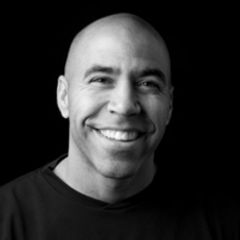
On a clear September afternoon Janet*, a prospective client, walked into our training studio looking for solutions for a better life. With measured excitement, she shared her desire and longing to return to her younger, more vibrant self, where she wore a size 2, proudly wore bathing suits and form-fitting clothing, jogged daily and could easily run circles around her friends.
That was 15 years ago.
When she came to us, Janet was by then in her late 40s, a stay-at-home wife and mother, a bottle-of-wine-a-day drinker, an avid equestrian and a regular prescription drug user to ease the constant pain in her low back and knees. At that moment in her life, she was a desperate and deeply depressed woman wanting to lose weight, recover her appeal to preserve her anemic marriage, get off the pain meds and feel better about herself, as life had “gotten away from her,” as she described it.
Many trainers in my position that day might have unintentionally cut Janet off by immediately jumping into their initial consultation script, explaining their gym’s unique programs and engaging in a monologic sales pitch touting the benefits and features of said offerings and training packages.
As an exercise professional eager to make a sale, I could have droned on and on (as fitness marketers often do) about the promise of the quick and miraculous effects of exercise, proper nutrition, stress management and ample rest. I conscientiously chose to refrain.
I was tempted to provide proof of several before-and-after pictures of our studio’s client profiles that were similar to hers and their subsequent success stories over the years. I resisted the temptation.
I may have chosen these seemingly helpful conditioned responses earlier in my career, but experience and acute awareness informed my decision to step outside of the usual personal training sales and marketing mode and lean more heavily into the fundamentals of compassion and empathy. My arsenal of sales “techniques” would have probably served my needs momentarily, while unwittingly neglecting the needs of Janet by glossing over and miscalculating the pain she was enduring and the damage she was inflicting upon her health as a result. Unfortunately, this is an all-too-common practice in our industry, which is certainly not good for business in the long run because closing a sale without fully understanding the needs of the client rarely sustains the intended relationship.
Choose to Take a Different Approach
My approach that day was different than usual because the weight of the moment called for triage measures rather than standardized cookie-cutter sales-pitch scripts drilled into my head during my fledgling years as a personal trainer (and periodically revisited during the lean months). That day, I sensed a strong need for Janet to be heard like no one had ever listened before. Her desperation was palpable, and I wanted to make sure I fully understood the scope, breadth and depth of her condition before ascertaining whether or not I could do justice in helping her improve. It was my professional and ethical responsibility to do so.
She talked, and I actively listened. I respectfully asked questions while helping to affirm her dignity through eye contact and reassuring nods, as her disclosures grew more honest and intimately revealing. It was apparent that she had harbored these strong negative emotions for quite some time and was looking for the right opportunity to share them without feeling judged or censured.
For the moment, I was a positive catalyst helping to facilitate that process. With her permission, I took detailed notes to make sure that my listening remained active and my focus on her words, tonality and body language remained steadfast. Every detail of the conversation became important to me because within the details a deeper story was unfolding beyond Janet’s stated desire for aesthetic change.
Upon closer examination, it became clear that she instead wanted transcendent change that would set her free from the burden of ever having to return to the pain she was currently experiencing. My attention and recognition of this distinction strengthened my credibility and positioned me to be able to assist.
The rapport we established afforded me the opportunity to offer Janet alternative perspectives on realistic goal setting with respect to her weight-loss aspirations. Prior to visiting our studio, she spent months jumping around from one extreme fitness class to the next trying, unsuccessfully, to lose 20 pounds in 30 days. We abandoned this flawed approach and shifted her attention to losing 1 to 2 pounds per week over a longer period of time. I reminded her that her journey was a process of lifelong mastery built upon fundamental habits and could not be relegated to just 30 days of extreme fitness and bathroom scales.
We also focused on process goals versus outcome goals. For example, instead of placing all of her energy on losing weight, I recommended that we judge her success based on the number of high-quality 30- to 60-minute sessions she completed for the next 30 days.
We talked for well over an hour and by the end of our conversation she didn’t care what it cost or what the terms were to join our studio. She instinctively knew she had found the right place to grow and wanted to get started immediately.
Empathy Is Everything
Upon reflection, that initial session with Janet demonstrated the power of managing and modeling positive expectations and thus framing and foretelling the client’s experience. While I fancied myself a good listener and an effective sales-closer, Janet taught me the crucial importance of empathic listening as a way to demonstrate understanding, guide expectation and, in the process, earn the requisite influence to help others find the courage to change maladaptive behaviors.
Janet knew instantly that she could expect to be regarded as a valued client, because time was taken to hear the full range of her story and properly contextualize her life experience. She finally felt listened to and understood. Janet felt assured that there would be complete engagement in service solely to her overall improvement, and that reassurance was both comforting and invaluable.
Our conversation confirmed that she wasn’t just another number or training package meeting a sales quota, but rather a respected human being endowed already with the capacity to meet her goals. Our initial exchange proved to be the level of care and mental shift she needed to make positive changes in her life that continue to serve her well more than 10 years later.
A Stepwise Approach to Setting and Managing Client Expectations
The process and approach I took in my work with Janet continues to inform and shape my interactions with my clients today. Here’s the information you need to apply this same approach to setting and managing your clients’ expectations without dashing their hopes:
Step 1
Listen carefully and reflectively. When prospective clients come to you, it is often because they are in some form of pain (that is not necessarily due to an injury, by the way) and see you as an integral part of their solution. Honor their courage to ask for help by empathically listening to their needs. This process in and of itself is cathartic and therapeutic for clients. When a prospective client feels “listened to” instead of feeling “misunderstood” or “not heard,” you’re effectively clearing the pathway for higher-order interactions later on down the road. The research in this area clearly suggests the benefits and advantages associated with active listening across various arenas and situations.
Step 2
Establish preeminence and build trust by clarifying commonly held fitness and health misconceptions. For most consumers, the marketplace of fitness is confusing at best and intentionally misleading at worst. Become the trusted advisor by speaking to those inconsistencies that are bogging down your clients and then provide them with evidence-based recommendations within your scope of practice as a health and exercise professional.
Step 3
Identify and clearly articulate, in writing, your explicit role and responsibility to your clients so there is no confusion about the scope of your practice. Let each client know what he or she can consistently expect from you (e.g., professionalism, enthusiasm, structure, accountability, expertise and unconditional positive regard). Additionally, clearly outline what you expect of the client (e.g., punctuality, consistency, adherence, effort and commitment to the process). Once you create your formal document, sit with your client and discuss. Solidify your agreement by mutually signing and dating it. This level of clarity frames the context of your professional relationship and sets the tone for positive expectation. Be sure to remain consistent to maintain your credibility. What is written out and signed usually gets done.
Step 4
Set process goals in service of outcome goals. Once any myths or misconceptions your clients may be hanging on to are challenged and clarified, assist your clients by helping them develop realistic goals. Most clients focus on outcomes while neglecting the daily process-related tasks that are essential to goal achievement. By clearly identifying and charting the habits that lead to desired outcomes, you’ll be able to keep your clients accountable and troubleshoot glitches in the process.
Step 5
Chart and discuss processed-based progress weekly and measure outcome-focused goals quarterly. Assess, debrief, discuss and reset accordingly.
Moving Forward
Active listening, thoughtful questioning, goals clarification, reframing objectives, displaying genuine empathy, establishing clear boundaries and debriefing periodically are all challenging tasks that are rooted both in art and science. Like effective training, each skill requires care in the process, practice, feedback and fine-tuning over time.
Mastery of these communication skills, by their very nature, are time- and energy-intensive, requiring forethought, planning, attention-to-detail, reflection and consistent application. They are, however, well-worth the investment when you consider the lifetime value of a satisfied client. Consequently, be as patient with yourself as you are with your clients, as you develop your professional voice and hone your own unique approach and process in managing expectations. The care you take now will play tremendous dividends for you, your organization and your appreciative clients for many years to come.





 by
by 


